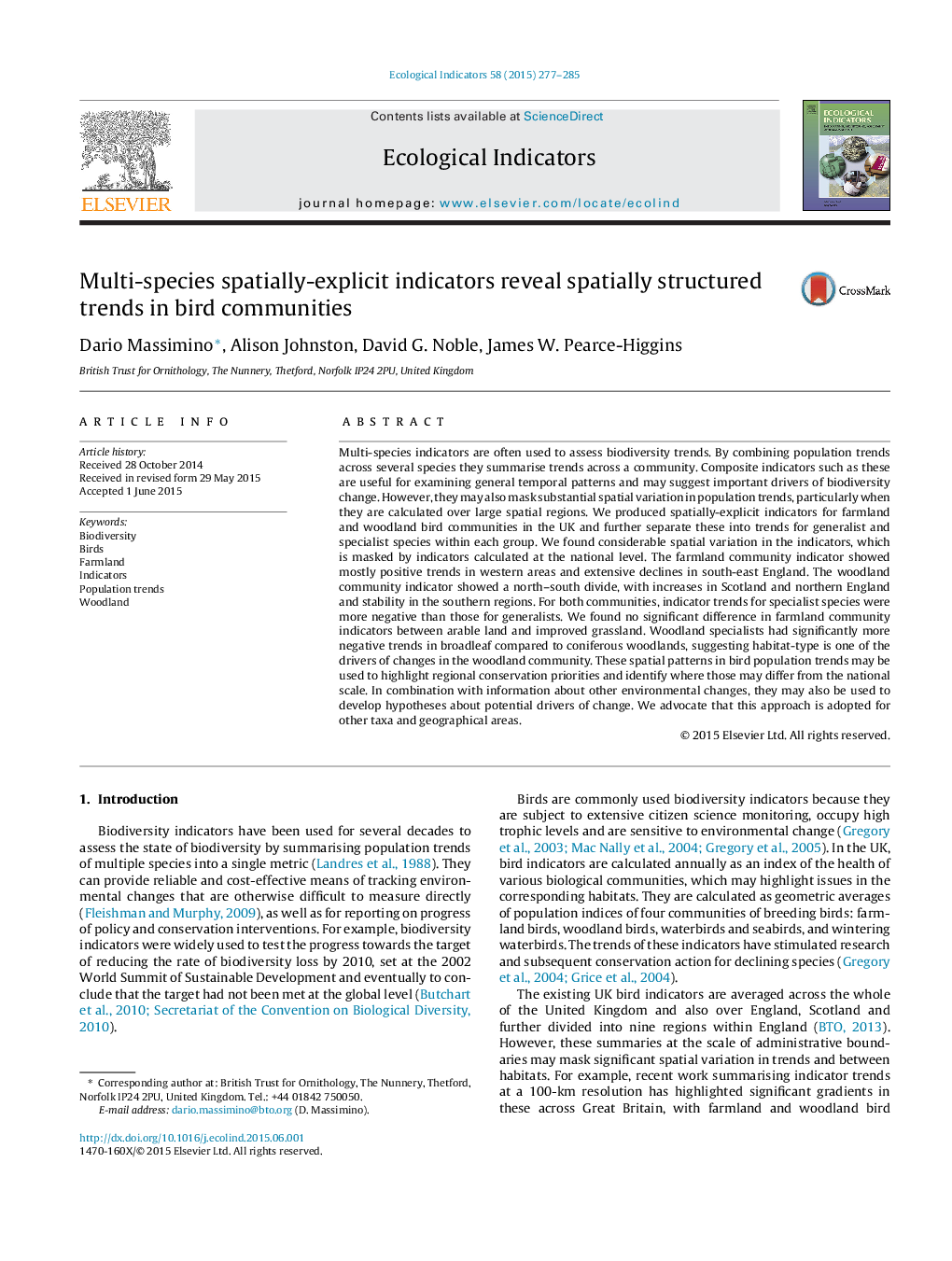| Article ID | Journal | Published Year | Pages | File Type |
|---|---|---|---|---|
| 6294267 | Ecological Indicators | 2015 | 9 Pages |
Abstract
Multi-species indicators are often used to assess biodiversity trends. By combining population trends across several species they summarise trends across a community. Composite indicators such as these are useful for examining general temporal patterns and may suggest important drivers of biodiversity change. However, they may also mask substantial spatial variation in population trends, particularly when they are calculated over large spatial regions. We produced spatially-explicit indicators for farmland and woodland bird communities in the UK and further separate these into trends for generalist and specialist species within each group. We found considerable spatial variation in the indicators, which is masked by indicators calculated at the national level. The farmland community indicator showed mostly positive trends in western areas and extensive declines in south-east England. The woodland community indicator showed a north-south divide, with increases in Scotland and northern England and stability in the southern regions. For both communities, indicator trends for specialist species were more negative than those for generalists. We found no significant difference in farmland community indicators between arable land and improved grassland. Woodland specialists had significantly more negative trends in broadleaf compared to coniferous woodlands, suggesting habitat-type is one of the drivers of changes in the woodland community. These spatial patterns in bird population trends may be used to highlight regional conservation priorities and identify where those may differ from the national scale. In combination with information about other environmental changes, they may also be used to develop hypotheses about potential drivers of change. We advocate that this approach is adopted for other taxa and geographical areas.
Related Topics
Life Sciences
Agricultural and Biological Sciences
Ecology, Evolution, Behavior and Systematics
Authors
Dario Massimino, Alison Johnston, David G. Noble, James W. Pearce-Higgins,
